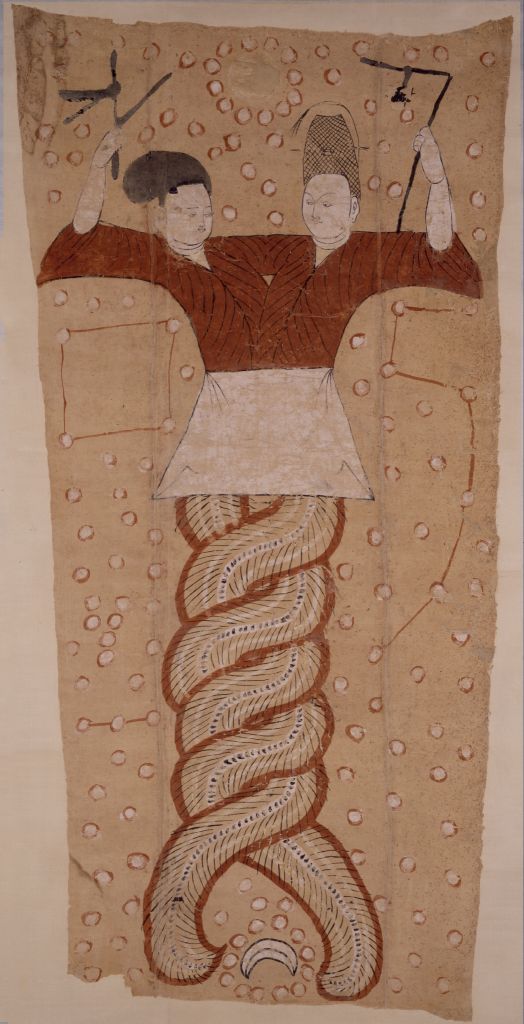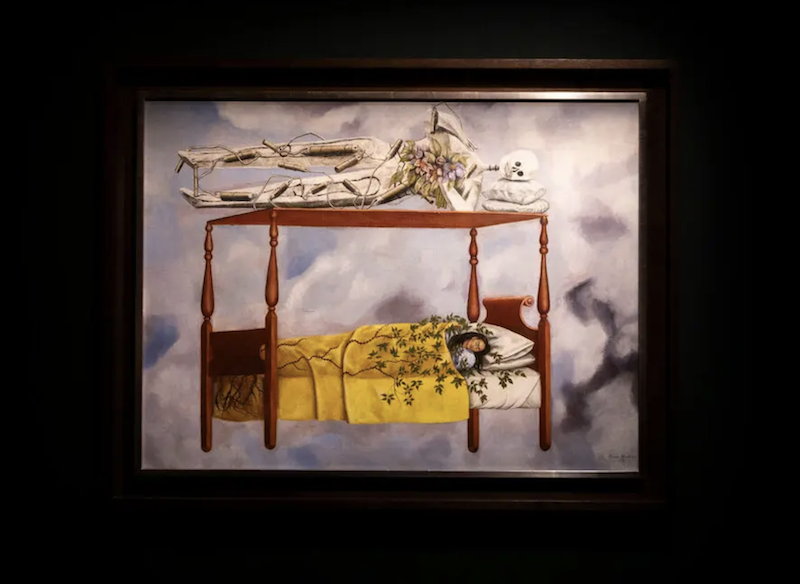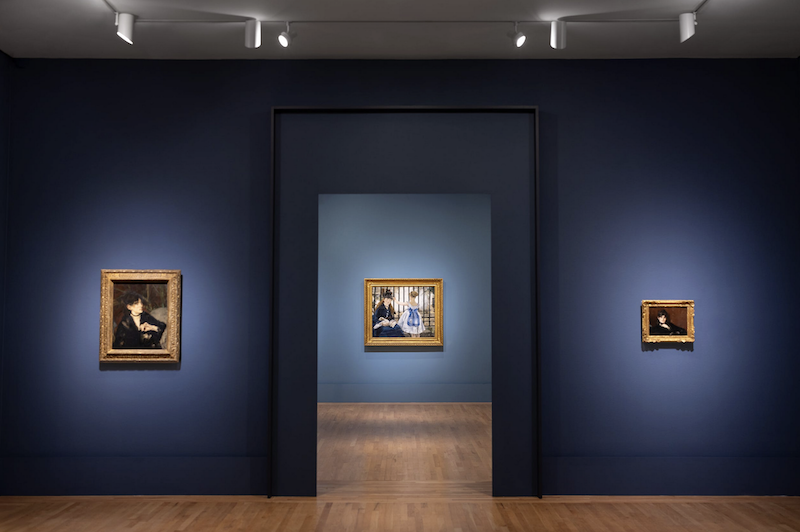
In the Year of the Snake, spring comes with its scales. In Chinese culture, snakes are known as "little dragons" and are one of the prototypes of the dragon totem. In traditional paintings, snakes have been depicted in many dynasties, from the depictions of Fuxi and Nuwa, to the depictions of snakes in murals and "Soushan Tu", to the depictions of zodiac paintings by modern and contemporary masters. The continuity and changes of these snake images in Chinese civilization represent wisdom, flexibility, and change.
In the thousands of years of traditional Chinese culture, snakes have always existed in various forms. The ancestors of the Chinese nation, Nuwa and Fuxi, were half-human and half-snake, the personification of the snake totem worship. The Fuxi and Nuwa silk painting in the Palace Museum was unearthed in the Astana Tomb in Turpan, Xinjiang in April 1963. It is generally believed that the ruler held by Fuxi symbolizes the earth, and the ruler held by Nuwa symbolizes the sky, which is used to match the sun, moon and stars in the painting.

Tang Dynasty, Fuxi and Nuwa, silk, color
In this painting, there are two men and women with human heads and snake bodies, both wearing narrow shirts and short sleeves, crimson Hu costumes, connected at the waist, and wearing a white skirt. The man is on the left, has no beard, wears a cage crown on his head, and holds a ruler in his left hand, on which there is an ink fountain (which has been corroded). The woman is on the right, with a high bun, and holds a ruler in her right hand. The man and woman embrace each other with their upper bodies, their arms connected in the middle, and their lower tails coiled and intersected into four sections to form a spiral. There are round wheels on their heads, and circles are drawn around them to symbolize the sun; there is a crescent moon under the tail, and circles are drawn around it to symbolize the moon. Circles of equal size are scattered all around the picture, and some are connected by lines to symbolize the stars.
Many silk paintings of Fuxi and Nuwa were unearthed from tombs dating from the Gaochang Kingdom to the Tang Dynasty's Xizhou Kingdom in Turpan. The paintings are similar in form: a human head and a snake body, copulating and embracing each other, Fuxi holding a ruler and Nuwa holding a compass. There is a sun above the silk painting and a moon below, surrounded by stars connected by silk threads.

Song Dynasty, "Searching for the Mountain" scroll (partial), anonymous, silk
Another painting depicting snakes in the Forbidden City is the scroll "Searching the Mountain". This painting depicts the story of Erlang Shen searching the mountain to subdue demons, so it is also called "Searching the Mountain by Erlang Shen". The story of Erlang Shen is widely circulated among the people and is also reflected in many literary and artistic works.
This scroll of "Searching the Mountain" was written by someone in the late Southern Song Dynasty or early Yuan Dynasty. The characters are painted with fine brushwork and heavy colors, and the folds of the clothes are drawn with iron wire, which is vigorous and powerful, and the images are vivid and lifelike, which is beyond the reach of ordinary hands. The brushstrokes of the mountains and trees are bold and unrestrained, close to the style of Liu Songnian in the Southern Song Dynasty. Compared with various different books on the same theme, this scroll is a fragment, lacking the main god, Erlang Shen, but its painting skills are higher than other books. The picture depicts the divine soldiers and generals searching for various monsters in the mountains and forests in a show of force. The monsters are all transformed from various wild animals, including tigers, bears, pigs, monkeys, foxes, goats, deer, rabbits, lizards, snakes, and tree spirits. These monsters, either in their original form or transformed into women, are all fleeing in panic under the pursuit of the divine generals, hiding in caves, or refusing to be captured. The divine generals, holding swords, spears, swords and halberds, and releasing hawks and dogs, block the front and back, leaving the monsters nowhere to escape.

Song Dynasty, "Searching for the Mountain" scroll (partial), anonymous, silk
Originally, Erlang Shen was praised as a positive character, but in this volume, the divine soldiers and generals are portrayed as ferocious and evil, making people hate them, while the monsters have kind faces, and their inner feelings of escaping in fear make people sympathize. Whether the author intended or not, the viewer will naturally associate it with the oppression of the common people by the officers and soldiers in society at that time.

East wall of the rear chamber of Cave 16 in the Five Dynasties Yulin Grottoes
There are also snakes in the murals. For example, in the image on the east wall of the back room of Cave No. 16 in Yulin Grottoes during the Five Dynasties, a large tree with its roots exposed above the ground and leaning is tightly entangled by a huge python. The snake is depicted in detail and in a large form. This is a part of the transformation of Raducha into a tree and Sariputra into a large snake. The painting is based on the text in which Raducha transforms into a tree and Sariputra transforms into a large snake, and "a long snake entangles the tree, and a strong wind blows, uprooting the tree and making it fall."

Qin'an Temple Paper Painting of Deities

Qin'an Temple Paper Painting of Deities (detail)
Standing proudly on the north-south central axis of the Imperial Garden of the Forbidden City, the Qin'an Hall was first built in the Ming Dynasty. The hall enshrines the Great Emperor Zhenwu, which is solemn and sacred. In the murals of the deities in the Qin'an Hall, a snake is entwined around the spear held in the right hand of Ma Tianjun in the east corner, which is lifelike.

"Arhats Reciting Scriptures" from "Album of Eighteen Arhats" by Li Lin of the Ming Dynasty
Among the albums of Eighteen Arhats by Li Lin of the Ming Dynasty, which are currently on display at the Shanghai Museum, there are the pages of Arhats Reciting Scriptures and Arhats in Meditation, which are related to snakes. Li Lin, a painter of the Ming Dynasty, was a disciple of Ding Yunpeng. He was known as Shanlan and was good at painting Taoist and Buddhist figures. He was skilled in line drawing and signed himself as "Longmian Houshen". The Arhats Reciting Scriptures page depicts an Arhat holding a bell and pestle, sitting upright and chanting a mantra, with an attendant standing on the right, and a Hu man kneeling on the left with a staff in his hand. There is a snake in the corner, as if he is looking up and talking. The staff, as a Dharma tool, could have been used to hit the snake, but the Hu man and the snake were influenced by the compassion of the Buddha's teachings and stopped attacking each other.

"Meditating Arhat" from "Album of Eighteen Arhats" by Li Lin of the Ming Dynasty

"Zen Meditation Arhat Picture Page" (Partial)
The "Zen Meditation Arhat" depicts an Arhat sitting in meditation on a dry tree, with his spirit rising above him and a giant python coiling below him. The picture shows the Arhat entering a state of meditation without fear of the giant python. In Indian Buddhist scriptures, the image of a snake generally refers to harmful things, and there are records in the literature about the Buddha Tathagata conquering a snake. As Buddhism was introduced to China, the image and status of the snake changed. People no longer worshipped snakes out of fear, but hoped to conquer snakes through the transcendent power of religion. This relationship between humans and snakes can be found in several examples in the Arhat belief.

"A Snake Swallowing an Elephant" from the Qing Dynasty's "Men Yingzhao's Supplementary Painting of Xiao Yuncong's Li Sao"
The "Li Sao" was originally painted by Xiao Yuncong in the late Ming Dynasty, and Men Yingzhao was summoned to copy and supplement the pictures in the Qing Dynasty. The album systematically depicts the contents of the relevant chapters of Qu Yuan's "Chu Ci": Chu Ci, Nine Songs, Heavenly Questions, Nine Chapters, Far Travel, Nine Debates, and Big Moves, etc., with a total of 155 pictures (copying 64 pictures from Xiao's original, and supplementing 91 pictures). One of the pictures is "A Snake Swallowing an Elephant".

Hua Yan's "Playing with Snakes"
Hua Yan is a representative of the "Yangzhou School of Painting" in the Qing Dynasty. He is good at painting figures, landscapes, flowers and birds, animals, and grass insects. He got rid of the current habits and pursued the ancient methods. His brushwork was free and unrestrained, full of spirit and interest. He was also good at calligraphy and poetry, and was known as the "three wonders". His "Playing with Snakes" uses realistic techniques to show the livelihood status and life scenes of the people at the bottom of society through the wandering life of folk snake-playing artists. In the picture, in the early spring, willows are swaying, and two Jianghu artists are dressed in simple clothes and have thin faces. They are hurriedly running between the green willow slopes. The latter carries a toad on his back and rushes forward, while the former carries a snake on his shoulder and looks back. They go from village to village and perform to make a living. The realistic subject matter of the painter Hua Yan, which objectively reflects the real life of society, is quite rare and unique in the literati paintings that advocate landscapes, flowers and birds, and ladies at that time.

Hua Yan: Snakes among rocks
Hua Yan's "Snakes among Rocks" depicts a red snake crouching among rocks and weeds, with its body coiled like a hemp rope, its head lifted into the air, its eye circles large and round, its mouth slightly open, its neck stretched out and its tongue spitting out its tongue. It is very different from the ferocious snakes in people's impressions, and appears peaceful and kind, gentle and lovely, full of beauty. A large blank space is left in the upper right corner of the picture, with the inscription "The concave and convex rocks are ancient, and the grass is dense and green. I heard that the spring cave has a fishy smell of snakes at night."

Xugu's "Red Snake on a Dead Branch"
Xugu, a painter of the Shanghai School, was good at painting landscapes, flowers, vegetables, fruits, poultry and fish. He especially liked to paint snakes, and he specialized in painting red-chained snakes. He never tired of it, which was quite rare in the history of Chinese painting. It showed his artistic pursuit of "being curious and breaking the rules in calligraphy and painting", as well as his unique and eccentric personality style. In his work "Red Snake on Dead Branch", a thick and colorful red-chained snake is depicted. The snake's head is tilted forward to the left, with its head raised and its tongue spitting out. The snake's body is coiled several times, curled and coiled among the branches and leaves of the old tree, and its tail extends to the lower right. The whole work is dotted, drawn, and rubbed, with thick and thin, sparse and dense, and the ink is dripping. The brushwork is exquisite, especially the white space set at the snake's head, which looks like a beam of highlight, highlighting the details of the red snake's head with bright eyes and long tongue spitting out frequently, which shows the red snake's aggressive and ferocious attacking posture. On the left side of the painting is the inscription "imitating Jie Tao Pavilion, a mountain dweller from Ziyang", with a square seal of "Xu Gu" in red seal script. "Jie Tao Pavilion" is the name of Hua Yan's study, which is intended to show that the painting follows his style, but also innovates, showing the painter's own style of writing.

Ren Xun's "Zodiac Figures Album" - "Liu Bang Slays the Snake"

Li Yiting's painting of a snake in the "Collaborative Album of the Twelve Zodiac Signs of the Republic of China"

Pu Xinyu's "The Snake in the Chinese Zodiac"
For painting, the image of a snake is the image of a line; the movement of a snake is like the wandering of lines in calligraphy and painting; the lines in calligraphy and painting are also like the winding of a snake. The so-called brush strokes are like dragons and snakes, like dragons and snakes, like dragons and snakes in smoke and clouds, as fast as a startled snake, a startled snake hides in the grass, a leaping snake goes to a cave... all of them are vivid portrayals of the spirit and the brilliance of the spirit.

Qi Baishi's painting "Snake of the Twelve Zodiac Signs"
Qi Baishi's "Grass Snake" is one of the paintings in the "Album of the Twelve Zodiac Signs". It depicts a green snake crawling carefully among the wormwood. The composition is simple, the lines are smooth, and the brushwork is delicate. In the picture, the green snake is winding forward, and its body is of different thicknesses, but it is painted in one stroke, which is natural and without any trace of deliberate carving. Above the snake's body, a wisp of wormwood is outlined, and below it is dotted with needle-like fine grass, which cleverly creates the activity environment and living space of the green snake, with a vivid image and freehand and vivid expression.

Gao Qifeng: "Gentlemen are metaphors"

Xu Beihong: Snake of the Chinese Zodiac

Lu Hui's "Snake in the Zodiac"
Like Qi Baishi, many famous calligraphers and painters in modern times like to paint the twelve zodiac signs, and they depict the snake in their own way and perspective, including Pu Xinyu's "Snake in the Twelve Zodiac Signs", Lu Hui's "Snake in the Twelve Zodiac Signs", Xu Beihong's "Snake in the Twelve Zodiac Signs", etc.

Ma Jin: Coiling Snake

Li Kuchan: Red Snake Calla Lily

Shi Lu's "Turtle and Snake"

